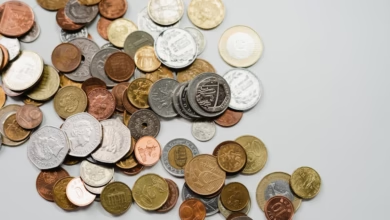The Strategic Role of Central Banks in Gold Reserves: Navigating Global Finance and Market Trends

In the intricate landscape of global finance, gold reserves held by central banks play a pivotal role that extends far beyond mere investment portfolios. As we navigate through fluctuating economic climates and rising geopolitical tensions, understanding the dynamics of central banks' gold holdings becomes essential. This article delves into the multifaceted relationship between central banks and gold, exploring how these institutions influence gold market trends, manage their reserves as safe haven assets, and ultimately impact gold prices on a global scale. From the historical context of the gold standard to modern strategies involving gold ETFs and futures, we will examine how central banks navigate issues such as inflation and economic uncertainty. Additionally, we will analyze the latest trends in the gold market, highlighting the significance of gold recycling, sustainable gold mining, and the burgeoning interest in gold collectibles amid a backdrop of evolving financial technologies and the rise of cryptocurrency. Join us as we uncover the essential role of gold in shaping global financial stability and its enduring allure as a trusted asset.
- 1. The Role of Central Banks in Gold Reserves: Understanding Their Impact on Global Finance
- 2. Gold as a Safe Haven Asset: How Central Banks Manage Gold Holdings Amidst Economic Uncertainty
- 3. Analyzing Gold Market Trends: The Influence of Central Banks on Gold Prices and Global Demand
1. The Role of Central Banks in Gold Reserves: Understanding Their Impact on Global Finance
Central banks play a crucial role in managing gold reserves, which significantly impacts global finance and economic stability. As entities responsible for monetary policy, central banks hold substantial quantities of gold, often viewed as a safe haven asset. This is particularly relevant during periods of economic uncertainty or inflation, where gold serves as a reliable hedge.
By maintaining gold reserves, central banks influence gold prices and market trends. Their buying and selling activities can lead to fluctuations in the gold market, affecting not only investors but also the broader economy. For instance, when central banks increase their gold holdings, it can signal confidence in gold as a long-term investment, prompting other investors to follow suit and drive prices higher.
Gold investment strategies often involve various forms of assets, including gold ETFs, gold futures, and physical gold such as bullion and coins. Central banks' decisions regarding their gold reserves can impact these investment vehicles. For example, if a central bank decides to sell a portion of its gold reserves, it might lead to a decrease in gold prices, affecting investors who have placed their faith in gold coins investing or in luxury gold products.
Moreover, the gold trade is intricately linked to global gold demand, influenced by factors such as economic conditions, geopolitical tensions, and changing market sentiments. Central banks’ gold holdings also play a role in gold recycling and refining operations, as they may sell or trade gold to manage liquidity or to support their currency's value under the gold standard.
In recent years, the relationship between gold and cryptocurrency has gained attention, with discussions around how these assets interact in diversifying portfolios. Central banks’ attitudes toward gold can affect perceptions of both gold and cryptocurrencies as viable investments.
Sustainable gold mining practices are also increasingly on the radar of central banks, as they seek to balance their gold production with environmental and social responsibilities. This aspect of gold market analysis reflects a growing awareness of the impacts of gold mining on communities and ecosystems.
In summary, central banks' gold reserves are not merely financial assets; they are pivotal in shaping the dynamics of the gold market and influencing global finance. Their actions in the gold market can have far-reaching consequences for gold prices, investment strategies, and overall economic stability.
2. Gold as a Safe Haven Asset: How Central Banks Manage Gold Holdings Amidst Economic Uncertainty
In times of economic uncertainty, gold has consistently emerged as a safe haven asset, prompting central banks to maintain robust gold reserves. As global financial markets fluctuate, many investors turn to gold for its perceived stability and intrinsic value. Central banks, recognizing the role of gold in diversifying their assets, manage their gold holdings strategically to mitigate risks associated with inflation, currency depreciation, and geopolitical tensions.
When central banks accumulate gold, they often focus on physical gold, including gold bars and gold coins. These tangible assets not only serve as a hedge against economic instability but also enhance the credibility of a nation’s currency, especially in relation to the gold standard. As gold prices fluctuate in response to market trends, central banks engage in gold market analysis to inform their buying and selling decisions, ensuring their gold investment remains advantageous.
Moreover, with the rise of financial instruments like gold ETFs and gold futures, central banks can further leverage their gold reserves without physically trading the commodity. This allows for a flexible approach to managing liquidity while still benefiting from gold’s protective qualities. Additionally, sustainable gold mining and gold recycling have become vital considerations for central banks, aligning their gold holdings with global demand for ethical and environmentally responsible practices.
As the global gold demand continues to evolve, influenced by factors such as gold and inflation and the growing interest in alternative assets like cryptocurrency, central banks remain vigilant in adjusting their gold strategies. By maintaining substantial gold reserves, they not only safeguard their economies but also contribute to stability in the broader gold trade. Ultimately, the management of gold holdings by central banks reflects a deeper understanding of the dynamics of the gold market and its critical role in global finance.
In conclusion, central banks play a pivotal role in the gold market, ensuring that their gold reserves serve as a reliable buffer against economic uncertainty. By strategically managing these assets, they reinforce the importance of gold as a safe haven, fostering confidence in both their currencies and the global economy.
3. Analyzing Gold Market Trends: The Influence of Central Banks on Gold Prices and Global Demand
Central banks play a pivotal role in shaping gold market trends, significantly influencing gold prices and global demand. As major holders of gold reserves, central banks' purchasing and selling activities can create ripples throughout the gold market. When central banks increase their gold holdings, it often reflects a strategy to diversify assets and hedge against currency fluctuations, inflation, and geopolitical uncertainties. This behavior can contribute to a bullish sentiment in the gold market, driving prices higher as investors perceive gold as a safe haven asset.
In recent years, there has been a noticeable trend of central banks accumulating gold, which has led to increased global gold demand. For instance, when a central bank announces an increase in its gold reserves, it can trigger a wave of investment interest among both institutional and retail investors. This surge in demand can also push prices up, making gold investment more attractive. Investors often view gold as a reliable store of value during times of economic instability, similar to how cryptocurrencies have gained traction as an alternative asset class.
Conversely, when central banks decide to sell off portions of their gold reserves, it can lead to a decline in gold prices. Such actions may indicate a shift in monetary policy or an attempt to stabilize their domestic currency. As a result, market participants closely monitor central banks' gold activities, considering them crucial indicators in gold market analysis.
Furthermore, the influence of central banks extends beyond mere trading activities. Their policies can affect other aspects of the gold market, such as gold mining and production. For example, higher gold prices can incentivize mining companies to increase gold production, while lower prices may lead to a slowdown in gold mining operations. Additionally, gold refining and recycling efforts are often driven by market demand, which can be influenced by central bank behavior.
In an era where sustainable gold mining practices are gaining importance, central banks' commitment to ethical sourcing and sustainability can further shape global gold demand. As consumers increasingly gravitate toward luxury gold items, such as gold jewelry and collectibles, the push for responsible mining can impact the overall perception of gold as an investment.
In summary, the actions and policies of central banks regarding their gold reserves are fundamental to understanding gold market trends. Their influence extends to gold prices, global demand, and even the broader economic landscape. Investors need to keep a close eye on these dynamics, as they can provide valuable insights into future market movements, including gold futures and the potential for physical gold investments.
In conclusion, central banks play a pivotal role in shaping the dynamics of gold reserves and their influence on global finance. As we have explored, their strategic management of gold holdings not only reinforces gold's status as a safe haven asset during periods of economic uncertainty but also impacts gold market trends and prices. The interplay between central banks and gold investment is crucial, particularly in a landscape where inflationary pressures and geopolitical tensions drive demand for physical gold, gold bullion, and gold coins.
Moreover, the evolving nature of gold trading, including the rise of gold ETFs and gold futures, reflects a shift in how investors approach gold as part of their portfolios. As sustainable gold mining practices become increasingly important, the industry must also address challenges like gold smuggling and the ethical implications of gold production.
Looking ahead, the relationship between gold and emerging financial technologies, including cryptocurrency, will likely continue to develop, further influencing global gold demand and investment strategies. Understanding these factors not only enhances our knowledge of gold's role in the financial system but also equips investors with insights needed for effective decision-making in the gold market.
As central banks adapt to changing economic landscapes, their gold reserves will remain a cornerstone of financial stability and an essential element in the broader discussion of wealth preservation and investment strategies. By staying informed on gold market analysis and trends, investors can better navigate this complex and continually evolving market.
References:
[Include your sources here in APA format]




